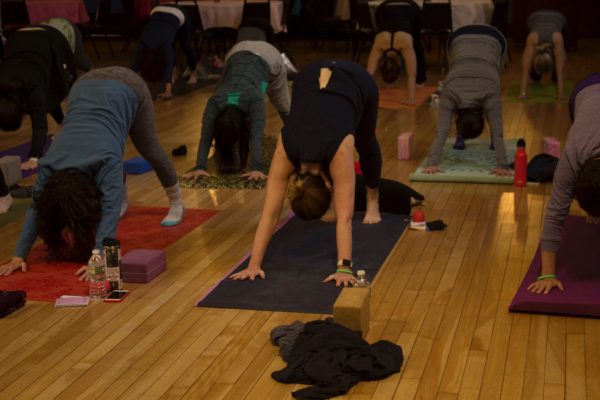
Did you ever watch a new student in Downward Dog? Often, what happens is they relax towards the floor or lean into their shoulders, creating a slumping effect. This is common, especially if they are just starting to build strength in the upper body. Downward Dog is most definitely a challenging pose and there are quite a few muscle groups that are helpful to use when in the pose.
One of the big things we can leverage in the pose is the arms. We can literally create leverage by pressing away from the floor in the pose. Try it the next time you’re in Downward Dog. Press away from the floor with a good deal of emphasis and see if you feel the effort of the pose shift from the arms to the core and legs. Again, there are other factors at work here and other muscle groups to use but here, let’s just focus on the use of the arms.
This is why it’s so helpful to cue your student to “press away” from the floor in Downward Dog. It will prevent their arms from tiring out and will create more length in the spine.
However, there can be some unwanted effects and if they have tight hamstrings, their spine may round. All the pushing they do with locked knees can have the unintended effect of rounding the spine. This is due to the effect on the kinetic chain; this idea that the body and the parts of the body are all interconnected and any action in one part of the body may effect other parts (and not in ideal ways).
To find out more about this, check out my video on the topic. It’s in my anatomy Facebook group. To join, click here.Â
This concept of leverage and how to use anatomically based cues are found in my latest book, “Structure and Spirit.” You’ll learn anatomy, cues for your classes as well as spiritual themes you can share as well. To find out more, read positive reviews and purchase the book, click here.Â
Thanks for reading and let me know what you think by leaving a comment!Â

Thanks Karen for all your wonderful tips, blogs and webinars. Used to go to your class but I moved to Spain. You have a follower in Madrid:)
Vanessa, hello! I think I knew you moved to Spain! How great! Nice to hear from you! I am so glad we’re still in touch and you are liking the content. Have you listened to the podcast yet? Keep in touch! Thanks, Karen